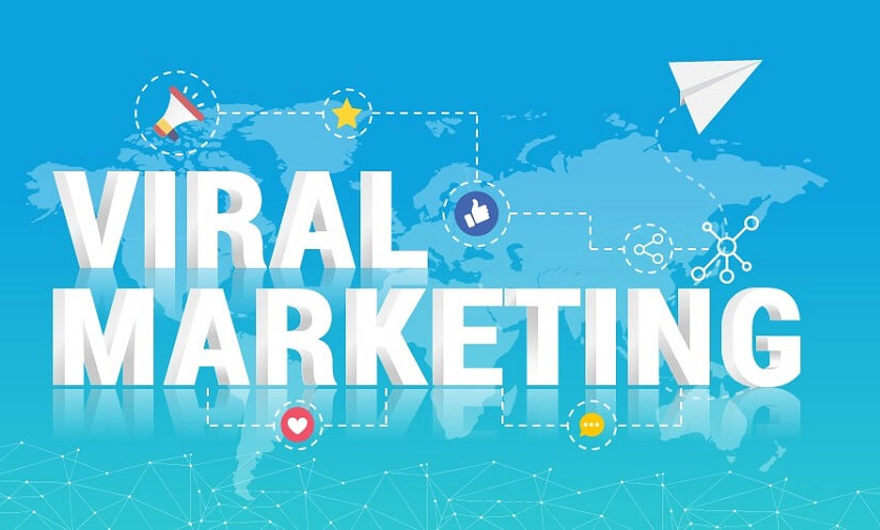Marketing is one of the most important activities a business does for its success and growth. Marketing not only promotes brand awareness but also increases sales, business growth and closer customer relationships. In this article, we first discuss what marketing is and then we look at the types of marketing and its methods.
Combining marketing and the four “P” of marketing
One of the most well-known marketing terms is a concept called “Marketing Mix”, which translates to terms such as “marketing element mix”. This concept is more commonly known in the marketing world as the “Four P’s”; Because the English name of each of the four components of the marketing mix begins with the letter P. The marketing mix has historically been a mix of Product, Price, Promotion, and Place. Basically, marketing revolves around these four components. In fact, marketing tactics and channels are constantly evolving, but these components are principles that never change, and all marketing actions are centered on them. Of course, there are other models (including the seven-P model), but these four will suffice to understand how marketing works.
Let’s look at each of these key components of marketing:
- Product
This is what the business is looking to sell. The product can be a physical product, or a service (such as consulting, subscriptions, or anything similar). To market each product, the following must be specified: – How many different types of product must be sold? For example, a car company has to plan for the different groups of cars it wants to produce. How should each product be packaged or delivered? For example, the seller of car flooring must decide how to present their products, whether they should be delivered to the customer in a box, bag or something else. – What services will be provided for each product? Items such as product warranty, referral process and the like should be specified. In addition, marketing can go into the design of the product and the features it should have. In fact, the best performance in marketing comes when marketing teams work with production teams.
- Price
Naturally, what matters here is the cost of buying or using the product. At the same time, price and related issues, despite their appearance, are relatively complex issues. Considerable points in the issue of product price are: – What price can be reasonable for the product in question? Determining fair and reasonable prices based on production costs and the costs that people are willing to pay will require careful market analysis and competitive research. At what time of the year or under what incentive policies is a customer eligible for a discount? Will the discount be applied as a percentage or a fixed figure? – Is it reasonable to offer a variety of payment options? For example, a car dealership may offer options such as leasing or installment payment to the customer instead of receiving the full amount at the outset.
- Promotion
if a product is launched and no one knows about it and its features and attributes or isn’t interested in it therefor it doesn’t get sold then What good is a product if it simply “blends in” with everything else out there? that’s why, after the launch of any product (or even before it), that product must be promoted so that people are aware of its existence and benefits. In this regard, items such as the following components should be considered: – Which channels will be used to promote the product? These channels can be online (for example, social networks) or offline (such as billboards). In which places is the promotion done? In social media or real life? In stores? In different ceremonies and events? – What message and text should be used? What text and tone can best reveal the nature and benefits of the product to the audience and persuade them to buy?
- Place
Location is related to the “distribution” of the product. The goal here is to make the product available where and when the customer wants it. In other words, the right product must be available to the customer at the right place and time to be able to find and buy it. In this regard, you must answer the following questions: – How and where will the product be distributed? For example, via the Internet or offline? – Exactly in which areas is the product distributed? For example, if you are a seller of woolen garments, areas such as the southern regions of the country may not be a good place to distribute your product.

Why should we market? What are the benefits of marketing?
Now you may be wondering why we should market. What are its benefits? There are 5 reasons why we need to market.
1- Awareness and information
With marketing, we can provide users with knowledge and information about the value and features of the product. Audiences also become more familiar with the brand.
2- Help getting to know the customer
Marketing helps you get to know your customers better. Market research can also be done using marketing. Market research means buyer behavior, including psychology, market segmentation, geographical area, and so on. After market research, the target market can be identified and analyzed and the product or service can be adjusted accordingly.
3- Increasing sales
Marketing can increase your sales. How? Using marketing in different ways and methods makes people more convinced that services or products can help them and solve a problem. Therefore, it has an effect on customer behavior for buying and increases sales.
4- Attract the customer
When you market information about a new company or product, you attract new customers, especially social media marketing and or creating a contest, and more, makes the customer feel important and more interested in your brand.
5- Branding
Perhaps the most important marketing advantage is branding. But in order to be known as a product or service, you must carefully choose the marketing methods that can be effective and best represent your brand.
What is the nature of marketing strategy?
Three main components of strategic marketing management: 1- Strategy 2- Tactics 3- Techniques
- Marketing strategy
It consists of a large number of operational tactics and professional techniques.
If the marketing strategy is well defined, it can easily meet the needs of the customer through achievable goals.
While most companies are marketing, only a handful of companies are pursuing brand loyalty branding activities through marketing tactics and marketing techniques.
- Marketing Tactics
It is a set of methods intended to promote the goods and services of a business with the aim of increasing sales and maintaining the competitive position of the product or service.
Marketing tactics, if they are right, should lead to significant customer satisfaction. Marketing tactics need to be defined based on limited resources and to achieve maximum effectiveness.
- Marketing techniques
There are methods and situations that enable the intended tactics to achieve the same results in different ways.
The marketer will try to look at the tactics as options on the table and choose the main option or options according to the needs of the organization and the limitations and tools available.
There are various online and offline marketing techniques.
Offline marketing and online marketing
Depending on the use of the Internet or not, marketing can be divided into two types: online (using the Internet) and offline (without using the Internet).
Major online examples include trade shows, networks, and personal speech interactions. Key online techniques include corporate website, search engine optimization and webinars.
Types of offline marketing
Today, getting help from the Internet in marketing is not only possible and useful, but the Internet has become so ingrained in our lives that using all kinds of online marketing has become a necessity. At the same time, many offline or traditional methods have not yet gone down in history, and their use will not be without merit. Here are some of the most common offline marketing methods:
- Radio, television or magazine ads
- Viral marketing: In this method, users play a key role in disseminating content, and if your content is valuable to them, they will most likely share your content with other users.
- Word of mouth marketing: In this way, when a customer transmits their positive experience to another customer, that person becomes your customer and he / she transmits his / her positive experience to another person and this chain continues. It should be noted that today, the Internet and related tools are commonly used to convey these experiences.
- Seasonal Marketing: Marketing for opportunities such as climate change and holidays.
- Event Marketing: Marketing at various gatherings and events.
- Relationship Marketing: An effort to build a close and honest relationship and build customer interest in the brand.
- Environmental signs, signs and advertisements
- Offer free products or side rewards
- Sponsoring humanitarian, sporting and similar events
- Flyers and advertising tracts
- Attending local and trade fairs
Inbound marketing and Outbound marketing
Different types of marketing can be included in one of two groups: “Inbound marketing” and “Outbound marketing”. Outbound marketing occurs when a marketer reaches out to a potential customer. Outbound marketing tactics include advertising on search engines or websites, TV commercials, and the use of email marketing. Inbound marketing, also known as “kidnapping marketing” and “traction marketing”, helps the customer find us instead of us finding them. Content marketing and SEO are among the most important inbound marketing tactics.
The most popular type of marketing:
There are many types of marketing and applications, but the most important and popular type of marketing that is common are mentioned as follows.
1- Affinity Marketing
This type of marketing is also called Partnership Marketing or Charity Marketing. This type of marketing creates a deep connection between complementary brands. In other words, it can be said that charitable marketing is done by a business or organization in cooperation with a charitable organization to achieve common interests and with the aim of financially helping the community or better implementing the social responsibility of an organization. This type of marketing is very powerful. It has a high influence and impact.
2- Alliance Marketing
If two or more companies reach an alliance over their resources to promote and sell a product or service, then they are using reciprocal alliance marketing. This type of marketing has many advantages, including more profit for companies, as well as increasing market share and its impact on sales.
3- Ambush Marketing
A new marketing ploy is to increase public awareness of a brand secretly. To clarify this type of marketing, it is better to give an example. Suppose you go to the supermarket to buy shampoo. There are more than 30 shampoos for different hair on the shelves, but you are looking for the right shampoo for dry hair. The next challenge is choosing between several shampoo models with this feature.
Among the shampoos with this feature, several shampoos with the same price will attract your attention. And maybe a bigger can with more volume but the same price will catch your eye more. You do not know what the quality is. You do not know if it is better than the others or not? But you are tempted to buy and prepare to pay. This is trap marketing. This can even happen in the realm of campaigning. That is, they falsely claim to be sponsors of a marketing campaign.
Trap marketing is divided into two categories:
- Predatory trapping:
With fraudulent allegations, they declare themselves the official sponsors of that campaign.
- Direct trapping:
The telecommuting brand considers itself part of it without investing in the campaign, but they try but do not make a public claim.
4. Call to Action Marketing: CTA
This marketing is mostly used in websites. You try to get people to click through a banner, text, or even an image. This will eventually lead to sales.
5. Limited Marketing Close Range Marketing, CRM
Use Wi-Fi and Bluetooth to send promotional messages of products and services to a range close to customers.
- Cloud Marketing
This is internet marketing. In this type of marketing, all resources and facilities under the Internet are transferred and the participants in the process of this type of marketing are able to develop, modify, use or share it.
- Community Marketing
In this type of marketing, the needs of customers in a social group are met. The topic of social marketing was first raised by Philip Cutler and Gerald Zaltman in the 1970s. The main purpose of social marketing is to influence the behavior of individuals and ultimately raise the level of public awareness, not to gain economic benefits. Social marketing is mainly used to promote public health, reduce injuries such as traffic accidents, and protect the environment.
- Content Marketing
This marketing is booming in social media. Sharing content in channels and social media to create awareness of specific services and products and impact on potential customers is one of the approaches of this type of marketing.
9- Contextual Marketing
This type of marketing does not focus on the product or service but rather on a lifestyle. Perhaps the definition of marketing means: the art and science of producing the right content for the right customer at the right time. Content marketing means delivering content to the right audience through the right channel at the right time.
Of course, concept marketing is more than just content, it is usually not about focusing on the product or service itself, but on building a relationship and introducing a new lifestyle.

Context marketing is one of the newest marketing methods and that is why there is not much information about it on the internet. Contextual marketing is one of the best ways to influence the audience.
10- Cross-media Marketing
Using multiple communication channels such as emails, letters, web pages, etc. to provide information about products and services to the customer is called cross-media marketing.
11- Database Marketing
Creating a database of existing or potential customers to better communicate with customers and promote products or services.
12-Digital Marketing
The use of digital devices such as smartphones, computers, tablets and digital billboards to inform customers and business partners about goods and services.
13- Direct Marketing
Marketing is through direct communication with potential customers via mails, emails, flyers, letters, SMS, posters and more. Direct marketing is a relatively broad concept that encompasses many different types of marketing.
14- Diversity Marketing
With the growth of e-commerce and the expansion of Internet businesses, the owners of this type of business face a wide range of audiences, which makes them face a large range of expectations, interests, tastes, needs, beliefs, cultures and values. Therefore, finding suitable and effective marketing is one of their problems.
It is very effective to use combination methods such as campaigns and combining photography and preparing a questionnaire form and more, that collect information of the audience to be able to have a greater impact on them. These methods are called diversified marketing.
- Evangelism Marketing
It’s like word of mouth marketing. In this way, the company must increase the number of customers who support its brand, in order to promote customers who support the features of the product or service and ultimately increase the company’s profits.
16- Marketing without exchange; Pseudo-Free or Freebie Marketing
Usually a small, free sample of a product offered for advertising. The purpose of this marketing is to sell other complementary goods of this type of products or services in the next steps to the same customer.
17- Free Sample Marketing
This is a free offer to familiarize the customer with the product. This is done to persuade the customer to buy in the future.
18- Guerrilla Marketing
Using unconventional methods that have a great impact on the customer’s mind. It also has a high risk.
19- Transactional marketing
Marketing with the goal of selling more without paying much attention to the customer and their values.
- Scarcity Marketing
Motivate the audience by emphasizing inventory and time constraints.
21- Undercover or stealth marketing
Introducing the product in a way that does not look like an advertisement.
22- Mass Marketing
General marketing for all potential customers.
- Personalized Marketing or One to One or Individual
Using analytical information and digital technologies to provide relevant suggestions and messages to the audience.
24- Cult-tural Marketing
Considering the sectarian and cultural sequences that can be used for marketing purposes according to the psychological and behavioral components underlying them.
25- Humanistic Marketing
Marketing according to social, personal, physical and similar needs.
26- Reverse Marketing
Types of marketing through which, instead of trying to sell a product, the customer is persuaded to go to the company or product.
27- Retention Marketing
Return marketing is done with the aim of attracting and retaining customers. In fact, return marketing is done by customers in order to repeat the purchase.

12 Misconceptions about Marketing
Now that we are familiar with marketing and its types and prerequisites, let’s take a look at the misconceptions about marketing.
- Small or start-up businesses do not need marketing: quite the opposite, the biggest marketing benefits come from small or start-up businesses. How else can you find new customers and grow your business?
- Advertising is the same as marketing or is sufficient for marketing: Marketing is more than traditional advertising and includes more diverse and up-to-date methods. Today, to get the best results from marketing, you have to use various methods to grow your brand and interact with consumers.
- Knowing the customer is not a difficult task: The truth is that you can never read the mind and be aware of all the wants, needs and problems of the target customer; that’s why you need to always maintain your interaction with the customer through polls, social networks and any other way you can.
- Marketing is not necessary for former or loyal customers: Just because a customer has already bought from you or has the label of loyal customer on the forehead, does not make them not go to another business at the first opportunity. Therefore, it is necessary to strive to maintain and strengthen that loyalty so that you do not lose your regular customers.
- Marketing always requires a lot of money and time: You do not have to spend a lot of money to be effective and efficient marketing. On the other hand, spending a lot of money does not necessarily increase your marketing impact. The important thing here is to plan and determine the strategy according to the budget you have.
- Fortunately, today, thanks to the existence of online marketing channels, you can get the maximum possible return with the least cost. When it comes to time, you need to keep in mind that the value of marketing is such that you need to prioritize it among your business plans.Social networks are childish and are not a good place for formal and serious marketing: Statistics show a steady increase in the age of social network users; therefore, today older generations are active in these websites and apps. Given that many users of these networks are at the right age to buy your products, you should formally include social networks as part of your chosen channels in your marketing strategy.
- If you do the marketing right, it will work quickly: patience is essential in marketing; because the results of related actions usually appear gradually. However, if you do your marketing properly, after a while you will constantly see better and better results.
- Integration across different channels is not important: Coherence and coordination of marketing messages across different channels is essential and strengthens your brand position in the customer’s mind.
- If your product is great and high quality, you will not need marketing at all: this is one of the most common misconceptions about marketing. Assuming you offer the highest quality product in the world, what difference would it make if someone did not know about its existence and quality? Therefore, any product with any quality that you offer, you will always need marketing for it.
- Lowering the price increases sales and is the best marketing: Lowering the price gradually weakens your ability to offer newer and better products as well as better support, and often ends up hurting your career.
- The goal of marketing is simply to attract new customers: As mentioned before, you need to have a marketing plan for your existing customers and loyalists; Because one of the most valuable assets of any business are these regular customers and you should try to maintain them at any cost.
- None of the old marketing tools are effective: Some traditional types of marketing, such as word-of-mouth marketing, are still among the most effective marketing tools.
A last word
These marketing are one of the most popular marketing in the world. Of course, any company or organization can use a combination of these marketing to grow and succeed in their business.







Leave feedback about this
You must be logged in to post a comment.